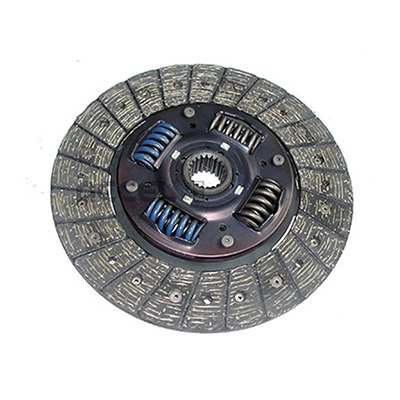- Arabic
- French
- Russian
- Spanish
- Portuguese
- Turkish
- Armenian
- English
- Albanian
- Amharic
- Azerbaijani
- Basque
- Belarusian
- Bengali
- Bosnian
- Bulgarian
- Catalan
- Cebuano
- Corsican
- Croatian
- Czech
- Danish
- Dutch
- Afrikaans
- Esperanto
- Estonian
- Finnish
- Frisian
- Galician
- Georgian
- German
- Greek
- Gujarati
- Haitian Creole
- hausa
- hawaiian
- Hebrew
- Hindi
- Miao
- Hungarian
- Icelandic
- igbo
- Indonesian
- irish
- Italian
- Japanese
- Javanese
- Kannada
- kazakh
- Khmer
- Rwandese
- Korean
- Kurdish
- Kyrgyz
- Lao
- Latin
- Latvian
- Lithuanian
- Luxembourgish
- Macedonian
- Malgashi
- Malay
- Malayalam
- Maltese
- Maori
- Marathi
- Mongolian
- Myanmar
- Nepali
- Norwegian
- Norwegian
- Occitan
- Pashto
- Persian
- Polish
- Punjabi
- Romanian
- Samoan
- Scottish Gaelic
- Serbian
- Sesotho
- Shona
- Sindhi
- Sinhala
- Slovak
- Slovenian
- Somali
- Sundanese
- Swahili
- Swedish
- Tagalog
- Tajik
- Tamil
- Tatar
- Telugu
- Thai
- Turkmen
- Ukrainian
- Urdu
- Uighur
- Uzbek
- Vietnamese
- Welsh
- Bantu
- Yiddish
- Yoruba
- Zulu
Okt . 09, 2024 02:21 Back to list
Flat Belts for Agricultural Equipment Applications and Benefits in Modern Farming Techniques
Flat Belts for Farm Machinery An Overview
Flat belts have been a cornerstone of agricultural machinery for decades, providing reliable and efficient power transmission across various farming equipment. Their design and functionality make them ideal for a wide range of applications in modern agriculture, improving productivity and enhancing the performance of machinery. In this article, we will explore the significance of flat belts in farm machinery, their advantages, various applications, and the future of this essential component.
Flat belts are made from durable materials such as rubber, fabric, or synthetic composites, which allow them to stretch and flex while transmitting power effectively. Their flat, smooth surface ensures maximum contact area with pulleys, leading to better efficiency and less wear. Unlike V-belts, which can be prone to slippage, flat belts maintain a consistent grip, allowing for smoother operation of machinery.
Flat Belts for Farm Machinery An Overview
The adaptability of flat belts makes them suitable for both low and high-speed applications. In low-speed scenarios, such as driving a stationary implement, flat belts can effectively transmit power without generating excessive heat. In contrast, they can also handle high-speed revolutions, as seen in certain harvesting machines, without sacrificing performance or safety.
flat belts for farm machinery

Another noteworthy benefit of flat belts is their cost-effectiveness. They are generally less expensive than other types of belts, such as timing or V-belts, and their longer lifespan reduces the need for frequent replacements. This durability translates into lower operational costs for farmers, helping to maximize profits and efficiency.
In addition to their mechanical advantages, flat belts are also contributing to environmentally sustainable practices in agriculture. By improving the efficiency of machinery and reducing fuel consumption, they play a part in minimizing the carbon footprint of farming operations. Furthermore, many manufacturers are now producing flat belts from eco-friendly materials, aligning with the growing demand for sustainable agricultural solutions.
Looking towards the future, the role of flat belts in farm machinery is likely to evolve alongside advancements in technology. With the rise of automation and precision farming, flat belts will need to adapt to new machinery designs and operational requirements. Innovations in materials science may also yield even more robust flat belts, further enhancing their performance and lifespan.
In conclusion, flat belts are an indispensable component of farm machinery, providing efficient power transmission with numerous benefits. Their versatility, cost-effectiveness, and contribution to sustainable farming practices ensure that they will remain a vital part of the agricultural landscape. As technology advances, flat belts will continue to evolve, supporting the growth and efficiency of modern farming operations.
-
Korean Auto Parts Timing Belt 24312-37500 For Hyundai/Kia
NewsMar.07,2025
-
7PK2300 90916-T2024 RIBBED BELT POLY V BELT PK BELT
NewsMar.07,2025
-
Chinese Auto Belt Factory 310-2M-22 For BMW/Mercedes-Benz
NewsMar.07,2025
-
Chinese Auto Belt Factory 310-2M-22 For BMW/Mercedes-Benz
NewsMar.07,2025
-
90916-02660 PK Belt 6PK1680 For Toyota
NewsMar.07,2025
-
drive belt serpentine belt
NewsMar.07,2025

